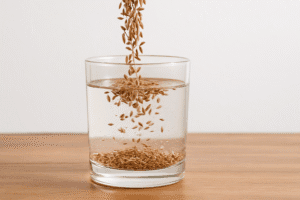Introduction
Namaskara! Today, we embark on a beautiful journey through the world of Indian spices. It’s said that these spices have been with us for thousands of years, flavoring our food and life. Indian spices are an integral part of our culture and history—from very ancient beginnings to today’s bustling markets.
Long ago, during Harappan civilization, about 3000 BCE, our ancestors found magic in spices like turmeric, ginger, and garlic. Then the spices became not only popular for their tastes but also for medicinal uses. They became part and parcel of our lives and rituals and are still being used today.
The Spice Trade As time passed, the fame of Indian spices spread far and wide. Merchants from places like Mesopotamia, Egypt, China, and Rome traveled great distances just to get a taste of our spices. Those ancient trade routes bore not just spices, but also stories and traditions, which make our spices a symbol of connect and exchange.
The Golden Age of Indian Spices
The Influence of the Silk Road
The Silk Road was one of the important channels through which Indian spices have transgressed into the world. For instance, merchants carried treasures from Indian soil, such as cinnamon, cardamom, and black pepper, to all ends of the earth. Therefore, the need for these spices in the rest of Europe increased and hence it supported both trade and cultural exchanges.
Spices in Ancient Texts
Our scriptures, the Vedas also contain several mentions of spices like turmeric and cumin seeds and their uses in religious and Ayurvedic applications. Even the Greeks and the Romans had called our spices as something from exotic lands and incredibly valuable to themselves. Through these texts, the exalted status of Indian spices is evident.
The Indian Spices in Medicine
Ayurvedic Medicine and Indian Spices
In our Ayurveda, the spices in use, such as turmeric, ginger, and fennel seeds, are used for their healing effects. It helps balance the body’s doshas and promotes overall health. Turmeric is known for its anti-inflammatory benefits and ginger helps with digestion.
Modern Medical Research
Today, scientific research supports what our ancestors knew. It is said that the active compound of turmeric, which is curcumin, has both anti-inflammatory and antioxidant properties. Piperine from black pepper is an agent for nutrient uptake, so our age-old wisdom stands true.
Indian Spices in Culinary Traditions
Regional Variations of Indian Spices
India is a land of diversities—a result of its geographical structure and rich cultural heritage. From the spicy curries of South India to the aromatic biryanis of the North, spices form the very soul of our cooking, infusing depth and flavor to every dish.
Iconic Indian Spice Blends
Our cuisine is famous for its intricate spice blends that change across borders. Garam masala is a combination of cinnamon, cloves, and cardamom, while rasam powder is a tangy combination for South Indian soup. The former are but some of the examples. These combinations reflect the use of art in balancing flavor, through which the dish shall be both complicated and yet harmonious at the same time.
Economic Impact on Indian Spices
History of Trade and Commerce of Indian Spices
Spice trading has already played a significant role in shaping the economic history of India. Our spices were an essential factor in what prompted explorers like Vasco da Gama and Christopher Columbus to discover new trade routes. This quest initiated the Age of Discovery which essentially made India the very epicenter of world trade, forever changing international trade.
Modern Spice Industry
Today also, India is among the largest producers and exporters of spices. These spices are very important to the economy and give millions of farmers a living; cumin, turmeric, coriander, and other spices are traded throughout the world, making the flavors of India popular in each and every corner of the world.
Popular Indian Spices and Their Uses
Turmeric
Turmeric! With its bright yellow color and earthy flavor, it finds prominence in most of our kitchens. We use it in everything from curries to rice dishes. The health benefits of curcumin in turmeric are widely recognized, as it is an anti-inflammatory with antioxidant properties.
Cumin
The warm and nutty taste of cumin seeds should necessarily go into all Indian dishes. Mostly, we dry-roast them to bring out the best aroma and use it for tempering, spice blends, curries, and bread. It aids digestion and is thus very popular in our households.
Black Pepper
Known as the “king of spices,” black pepper is a very appreciated spice that has gone through ages. The pungent flavor and piquant heat of black pepper make it versatile in many culinary preparations. One of the vital constituents present in black pepper, piperine, stimulates nutrient bioavailability and possesses multiple beneficial health effects.
To buy Black Pepper, click here.
Cinnamon
Cinnamon is described by its sweet taste and warm woody fragrance. It is used in almost every sweet and savory Indian food and is often used in various spice mixes, sweet dishes, and beverages. Besides its sweetness, cinnamon is an antimicrobial and has anti-inflammatory properties.
Cardamom
Cardamom, known as the “queen of spices,” gives a strong, aromatic flavor. It’s used in dishes like kheer and also in curries. Cardamom helps in digestion and respiratory problems.
Cloves
Cloves give an accent to the flavor of various culinary recipes with their sweet fullness and spiciness. They are one of the principal ingredients of spice mixes such as garam masala and find use in Ayurvedic medicine due to its analgesic and antiseptic properties.
Fennel Seeds
Fennel seeds have a sweet anise flavor and are used in Indian sweets, and also for aiding digestion. They are also used in various spice blends and pickling. Fennel seeds boast antioxidant and anti-inflammatory features.
To buy Fennel Seeds, click here.
Red Chilli Powder
Made from dried and ground red chilies, this adds the much-needed heat and color to Indian dishes. It forms a crucial part of the curry, chutney, and spice mix. Capsaicin in red chili is known to work wonders for pain relief as well as boosting metabolism.
To buy Red Chilli Powder, click here.
Star Anise
With its star-shaped pods and its flavor somewhat reminiscent of licorice, is used for making biryanis and spice mixes. It has digestive and respiratory properties.
To buy Star Anise, click here.
Bayleaf
Aromatic and slightly bitter, bayleaf makes flavor of the soups, stews, and rice dishes better. It has some antibacterial and antifungal properties.
White Pepper
Compared to black pepper, white pepper is milder; it is used in light colored dishes to give a slight heat to them without changing the color. Common in Indian soups and sauces.
To buy White pepper, click here.
Almond
The almonds add richness and texture to sweet, as well as savory preparations. They’re added to creamy kormas and desserts like badam halwa.
Whole Cashews
Whole cashews, widely popular in Indian cooking, add creaminess and crunch to your delicacies. Used in curries, gravies, and desserts while being a rich source of healthy fats and nutrients.
To buy whole cashews, click here.
Indian Spices in Global Cuisine
The Spread of Indian Spices
Our spices have left their mark on global cuisine, traveled far and wide because of centuries-old trade and cultural exchange. Today, they are essential ingredients in a whole host of dishes all over the world, including Moroccan tagine and Caribbean jerk chicken.
Fusion Cuisine
The infusion of Indian spices with other culinary traditions has resulted in exciting new flavors and dishes. Our spices are explored by chefs across the world to add innovation in food items such as turmeric lattes and spiced chocolate truffles, which really make for fusion cuisine.
Preserving the Legacy of Indian Spices by Adopting Sustainable Farming Practices
Many Indian farmers adopt sustainable farming practices for the continued availability of quality spices. Organic farming, crop rotation, and natural fertilizers help in maintaining soil health and biodiversity, allowing the next generations to delight in our spices’ rich flavors.
Heritage and Culinary Education
Promoting education regarding Indian culinary while traditional recipes also serve vital in conserving the heritage of their spices. Do this through cooking classes, food festivals, and cultural programs through which people can learn how important the spices are in Indian culture so that more people get to know about their heritage and celebrate it over the years.
FAQs
What are some of the oldest Indian spices?
Just to mention few among the oldest Indian spices, Turmeric, Ginger, and Garlic are above 7,000 years of age.
How did Indian spices contribute to global trade?
Being one of the most esteemed commodities, Indian spices became a great motivation for exploring and establishing high level trade routes that influenced the currents of the world’s trade heavily.
What health benefits does turmeric have?
Turmeric: Anti-inflammatory and antioxidants, it can help patients with diseases like arthritis and even improve health.
How Indian spices are incorporated in Ayurvedic medicine:
Indian spices like turmeric, ginger, and fennel seeds are incorporated in the medical application of Ayurvedic for balancing body doshas in promoting health and general well-being.
Common spice blends in Indian Cuisine:
Some of the more common spice blends in Indian cooking are garam masala, rasam powder, and curry powder, each with its own combination of spices.
How do I use Indian spices in my cooking?
You can include Indian spices while preparing spice mixes, curries, marinades, and even desserts to give another level of flavor to the preparations.
Conclusion
As we draw to a close in our journey to the bygone past regarding the Indian spices, I hope you were thrilled listening to their rich history and rich flavors. These spices mean much more than ingredients in our kitchen; they form a part of our culture, our traditions, and our lives. Let’s continue celebrating the legacy of Indian spices by passing down these stories and flavors to posterity.




